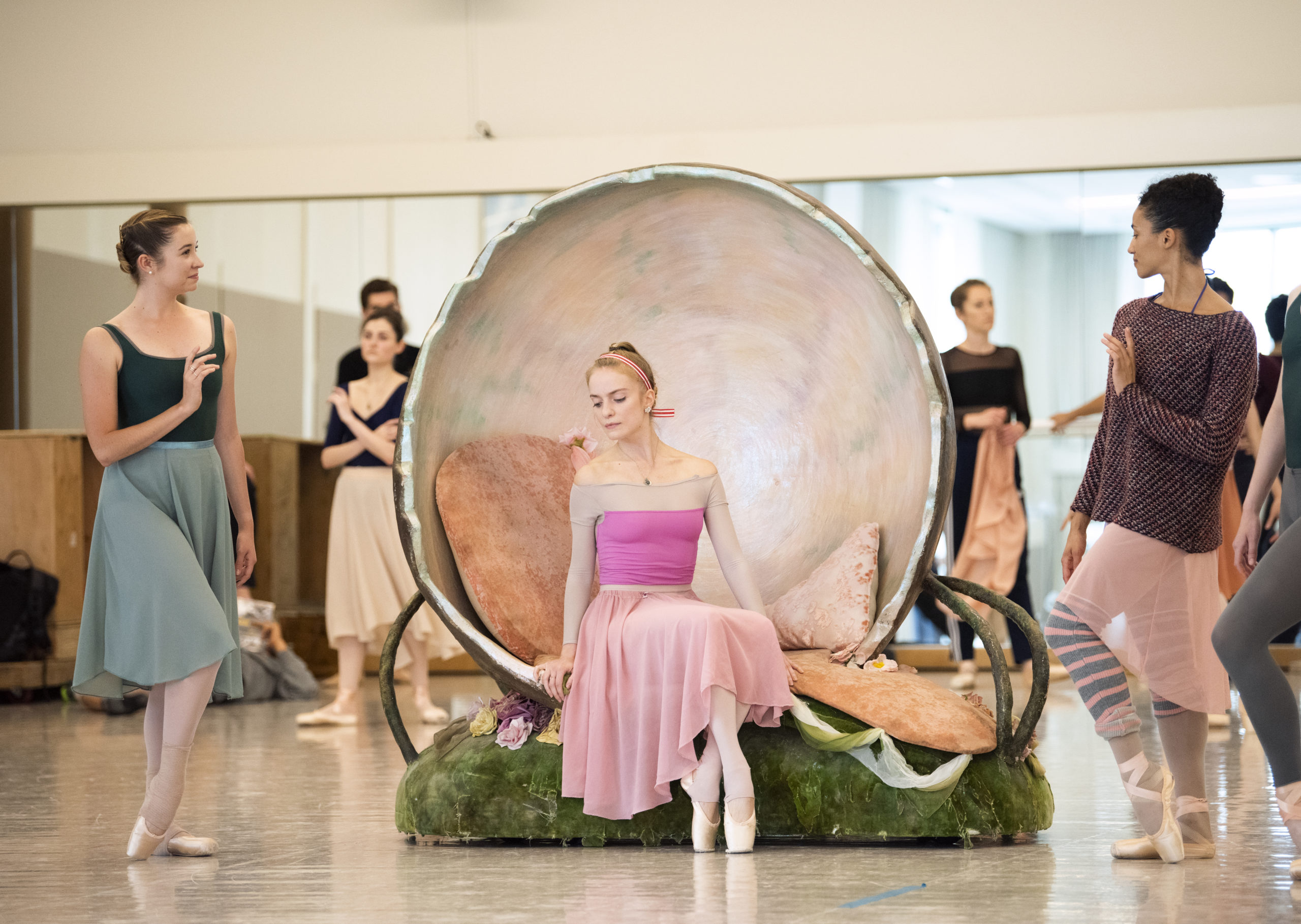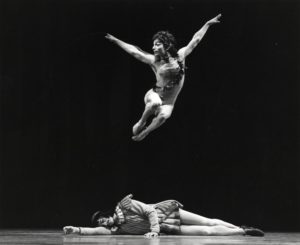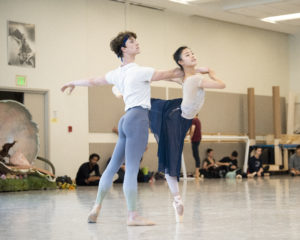
Photo by Erik Tomasson
Have you ever been to a wedding where the invited guests just couldn’t keep it together? I have. And I’m betting you know exactly the kind of wedding I mean. Sloppy, inappropriate speeches fueled by over-imbibing. Decades-old quarrels rearing their heads, passive aggressive looks running rampant and complex romantic entanglements pulling focus from the newlyweds.
William Shakespeare’s A Midsummer Night’s Dream paints a similar picture. Written toward the end of the sixteenth century (though scholars disagree on the exact year), the five-act comedic play declares that the Duke of Athens, Theseus, and the Queen of the Amazons, Hippolyta, are about to be married. Though very little time is actually devoted to that specific event. Instead, Dream focuses on the eccentric attendees who are gathering for the wedding celebration: the impish Puck; Oberon and Titania, King and Queen of the Fairies; the bewitched Bottom; and the lovers Demetrius, Lysander, Helena and Hermia, all of whom are embroiled in interconnected drama. As we follow this madcap collection of humans, fairies and sprites, shenanigans ensue. Unrequited love and familial expectations abound. Magic potions are deployed in order to ensure certain outcomes. Relationship pairings pivot and change. Scheming. Trickery. Dream runs the whole gamut. As the author so aptly penned in Act I, Scene I, “the course of true love never did run smooth…”
In 2019, Bay Area audiences had some wonderful opportunities to engage with this enchanting tale. Cal Shakes included it in their most recent season, as did a number of other regional theater troupes like Silicon Valley Shakespeare and Concord’s B8 Theatre Company. This coming spring, San Francisco Ballet (SFB) continues the trend, digging into their vast repertory archive to offer another A Midsummer Night’s Dream experience. One that communicates Shakespeare’s magically layered narrative through classical ballet, innovative choreography and stunning visual storytelling. A Dream filled with arms and hands that flutter as though casting a spell. With solos that command the space with large shapes, long extensions and lightning-fast batterie. Sharp, directional changes in the stage architecture mirror shifts in the story; turns and spins indicate a change in character intention and trajectory. At the beginning of March, the company brings George Balanchine’s 1962 adaptation back to the War Memorial Opera House stage. It’s been thirty-five years since SFB first debuted this two-act story ballet, and they are beyond thrilled to resurrect it under the impeccable direction of Sandra Jennings, full-time répétiteur with The George Balanchine Trust.

An incredibly important member of the creative team, the ballet répétiteur is tasked with teaching, coaching, rehearsing and staging an existing ballet work or any of its components. To do so successfully requires a soul intimately connected to the ballet in question. An encyclopedic knowledge of the choreography, to be sure, but also of the music, of each character’s developmental arc and of every design element’s contribution to the overall message or story. When it comes to Balanchine’s Dream, Jennings, who has a significant personal history with the ballet, certainly fits the bill. “As a young 11-year-old dance student, I fell in love with this ballet – Diana Adams was one of my teachers and she was the very first Titania,” she shares. As Jennings continued her dance studies and eventually launched her own professional career, that adoration only deepened. “When I was part of New York City Ballet from 1974 to 1983, I got to dance Dream many times, learning various parts from legends like Gloria Govrin and watching dancers like Edward Villella perform the principal roles,” she remembers, “it was one of my favorite ballets to dance, very romantic and every section felt so joyful.” With all that first hand experience and artistic lineage in tow, Jennings began staging Balanchine’s Dream (and other compositions) for the Trust in the mid-1980s. Internationally, she has set the work for Paris Opera Ballet, Ballet de Santiago and the Mariinsky as well as many US-based companies including Washington Ballet, Miami City Ballet and Boston Ballet.
This past summer, Jennings arrived in San Francisco ready to add SFB to that already impressive list (even though Dream would not hit the stage for six more months, SFB rehearses all the upcoming season’s repertory in the preceding summer/fall). A mix of excitement and anxiousness was indeed palpable for Jennings, “I was nervous because I was going to try and stage the ballet in three weeks, and only a few dancers in the company had ever seen this particular version…at the same time, I was so eager to share the work and was hoping that they might love it as much as I do.” The dancers, many of whom hadn’t yet been born the last time SFB performed Dream in 1985, shared those same feelings of excitement and anxiousness. “We don’t tend to do many full-length Balanchine narratives, and I think the company really came together for this new challenge,” relays Principal Dancer Esteban Hernandez. Jennings couldn’t agree more and was so impressed by how each dancer in every cast (there are three) was 100% present, so supportive of the process and the compressed timeline.

Tight schedule notwithstanding, Jennings’ strategic approach with Dream is always to begin with the harder choreography. “There’s Hippolyta’s solo, Hermia’s solo, several pas de deux as well as a dance for six couples that occurs in the ballet’s second act, but one of the very first pieces I teach is Oberon’s solo, which is supremely difficult” she explains. Though he will debut as Puck on opening night, Hernandez is also one of the dancers learning Oberon. He will dance that role on the second night of Dream’s run, and he can more than attest to its complexity, “Oberon’s variation is by far one of the hardest things I’ve ever had to do; it’s technically demanding, long and super fast – you have to remain totally in character the entire time, completely calm and collected even though you can’t feel your arms and legs once it’s over.”
At the same time, with Dream being a comedy, the ballet also incorporates plenty of fun and ample lightness. Hernandez sees Puck as one of those points of levity, “Puck is such a fun part: it’s very high energy; the movement style is more demi-character so things don’t have to be so pretty; and I like his mischievous quality, he is the one orchestrating everything and leading everyone, including the children’s cast, through the entire story.” And such a significant children’s cast it is! Dream calls for twenty-five young dancers for every performance – one as Titania’s page and the others play various bugs in the forest – and students from San Francisco Ballet’s School are handily and exuberantly filling these important roles. “As a child, Mr. B. [Balanchine] was in numerous ballets, and he felt the experience nurtured him so much; there is so much joy in the children’s sections, his choreography is such a wonderful gift to them that will forever touch their lives in a special way,” recalls Jennings.
There are so many special aspects of this Dream, of course for the participants, but also for the audience. Hernandez is quick to point out how this production can provide yet another platform for folks to experience Shakespeare, an artistic, literary force that can sometimes feel overwhelming and inaccessible, “Dream is able to remove preconceived notions people may have about Shakespeare and the theater by simplifying the story without compromising its essence.” Jennings agrees, “Mr. B. had to compress the play [the original source material has five acts, while the ballet unfolds over two], and even though there are some elements missing, this Dream tells the story in a way that you absolutely get what’s happening.”
Jennings will be back at SFB in the New Year to continue overseeing the return of Balanchine’s Dream – revisiting scenes, polishing choreography and delving deeper into the characters – ahead of opening night. Then, on March 6th, the company will invite its patrons to journey into dreamland with them! “The play and the ballet are really about human behavior – there are so many relatable human elements and emotions in the tale, which continues to make it viable, relevant and timeless,” Jennings describes. In addition to those universal themes and threads, Dream, in just two short hours, offers folks the space to escape to another realm. Hernandez hopes viewers can savor that opportunity, and for that brief time, leave everything else outside the theater, “I hope that audiences will be completely enthralled and transported to this magical world where the biggest worry is whether Titania will figure out that Bottom is not a donkey, but a human blanketed by a mystical spell.”
This article appeared in the Jan/Feb 2020 issue of In Dance.


